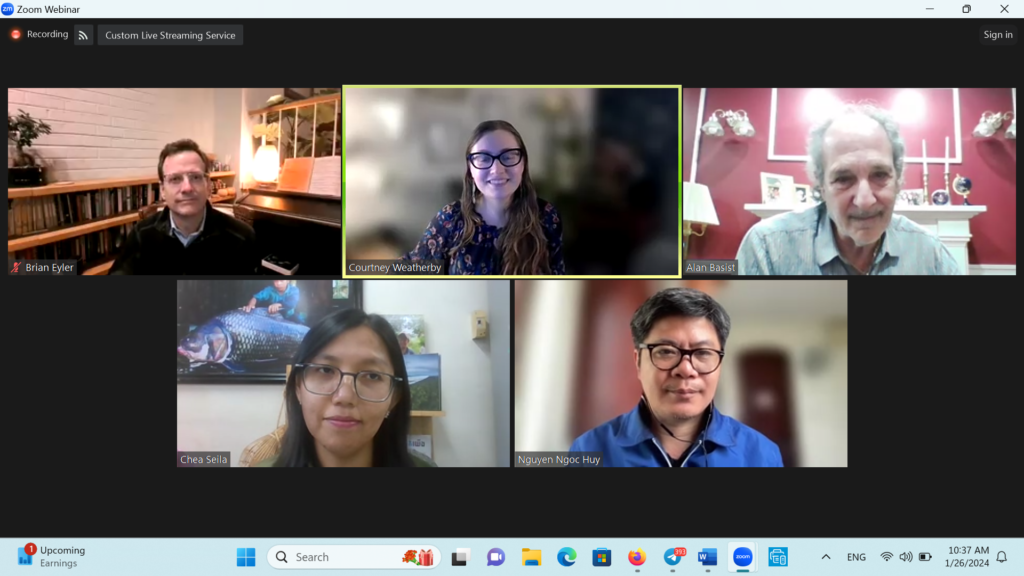On the morning of 26 January 2024, Researchers from the Cambodian Center for Regional Studies attended a Virtual Meeting and Event on the topic of “Where’s the Water: Mekong Dry Season 2024” organized by the Stimson Center. In recent years, water releases from upstream dams have tripled the amount of water in the Mekong during certain dry season months. Is this helpful or harmful? How will dam releases impact dry season flow along the course of the Mekong from Thailand to Cambodia this year?
During the meeting, CCRS researchers learnt from the Mekong Dam Monitor team of experts who gave the latest forecast of the 2024 dry season and review of major findings of the 2023 wet season including El Nino impacts and the quality of the Tonle Sap Expansion.
The Mekong Dam Monitor is an important open-source online platform that provides timely updates using remote sensing and satellite imagery on the levels of reservoirs large dams on the Mekong’s main stretch, as well as at numerous tributary dams with huge power generation capacities. The Monitor has done a good job in mapping out data and looking at the effect of temperature, including precipitation and other indicators along the Mekong River annually. These data help those who are concerned about the tipping point of the Mekong River to better understand the dreadful effects of over-damming and climate change on this mighty river.
We learn from the expert speakers that even the largest dams that were built can’t store up to 50% of the water level needed to justify the putting in place of the hydropower plants in the first place, as such the raison d’être of having a dam on the Mekong should be reviewed. Another interesting takeaway highlighted that although Tonle Sap has expanded during the rainy season, increased water did not bring the sediment and fish larvae for spanning nor nutrient or fertility to the Tonle Sap. Dams also prevent the natural flows of the Mekong River therefore reducing the yield of fish catch substantially out of Tonle Sap Lake which affecting severely livelihood of the inhabitants around Tonle Sap. Scientifically, dams and climate change such as El Nino impose severe dry and flood spells on the Mekong River.


